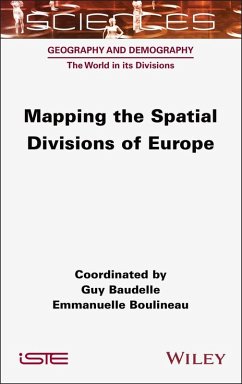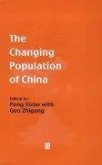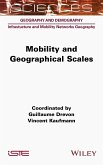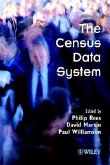Andere Kunden interessierten sich auch für
![The Changing Population of China The Changing Population of China]() The Changing Population of China150,99 €
The Changing Population of China150,99 €![The Politics of Place Naming The Politics of Place Naming]() Frederic GirautThe Politics of Place Naming147,99 €
Frederic GirautThe Politics of Place Naming147,99 €![Mobility and Geographical Scales Mobility and Geographical Scales]() DrevonMobility and Geographical Scales147,99 €
DrevonMobility and Geographical Scales147,99 €![Territorial Division for Public Action Territorial Division for Public Action]() Antoine LaporteTerritorial Division for Public Action147,99 €
Antoine LaporteTerritorial Division for Public Action147,99 €![Migration and Climate Change Migration and Climate Change]() Jamila AlaktifMigration and Climate Change159,99 €
Jamila AlaktifMigration and Climate Change159,99 €![Inequalities in Geographical Space Inequalities in Geographical Space]() Clementine CottineauInequalities in Geographical Space147,99 €
Clementine CottineauInequalities in Geographical Space147,99 €![The Census Data System The Census Data System]() The Census Data System200,99 €
The Census Data System200,99 €-
-
-
Produktdetails
- Verlag: Wiley
- Seitenzahl: 304
- Erscheinungstermin: 12. August 2025
- Englisch
- Abmessung: 234mm x 156mm x 18mm
- Gewicht: 585g
- ISBN-13: 9781789451818
- ISBN-10: 1789451817
- Artikelnr.: 74800510
- Herstellerkennzeichnung
- Libri GmbH
- Europaallee 1
- 36244 Bad Hersfeld
- gpsr@libri.de
Guy Baudelle is Professor Emeritus of Spatial Planning at the University of Rennes 2, France. He is also a member of the UMR CNRS ESO research unit and former Jean Monnet Chair (2003-2022). His work focuses on territorial development policies in the European Union and France. Emmanuelle Boulineau is Professor of Geography at the École normale supérieure de Lyon, France, and a member of the CNRS EVS research unit. She specializes in the political geography of territorial reform in Europe, particularly in Central and Eastern Europe.
Introduction xi
Guy BAUDELLE and Emmanuelle BOULINEAU
Part 1. Europe and Its Divisions: A Matter of Scale, Time and Perspective 1
Chapter 1. Europe, a Region with Variable Geography 3
Yann RICHARD
1.1. Introduction 3
1.2. Europe between globalization and (macro)regionalization: from
continent to functional macroregion 4
1.3. European community: an undefinable regional political object without
limit? 10
1.4. Europe and its divisions, old and new 14
1.5. Conclusion 20
1.6. References 22
Chapter 2. Europe, a Continent? A Geohistorical Analysis 25
Vincent CAPDEPUY
2.1. Introduction 25
2.2. A division with a history 26
2.3. A territory 36
2.4. Conclusion: an empty shell? 47
2.5. References 47
Chapter 3. The Dissemination of European Administrative Divisions
throughout the World 49
Nathalie FAU, Stéphanie LIMA, Hubert MAZUREK and Julien THOREZ
3.1. Introduction 49
3.2. The Western European model of the nation-state: dissemination and new
divisions 51
3.3. Internal divisions: adaptation, resurgence and innovation 57
3.4. The Europeanization or regionalization of the world? 63
3.5. Conclusion 67
3.6. References 69
Part 2. Divisions of Europe by the European Union 75
Chapter 4. Three Patterns of Territorial Division: NUTS, Macroregions and
Cross-border Areas 77
Emmanuelle BOULINEAU
4.1. Introduction 77
4.2. NUTS: a European gridding beyond the simple carving up of space 78
4.3. Macroregions: discontinuous, supraregional, integrational zoning with
fuzzy stakes 83
4.4. Cross-border spaces: a typology for European integration and cohesion
87
4.5. Understanding the impact of the three patterns of territorial division
in the construction of Europe 92
4.6. References 95
Chapter 5. Dividing the EU for Its Own Development 97
Frédéric SANTAMARIA
5.1. EU action without territory or legal authority 97
5.2. EU promotion of regional divisions versus the diversity of choices in
the organization of national territory 99
5.3. More territorialized EU action: a desire confined to certain areas 104
5.4. The idea of (right) (territorial) governance as a substitute for
divisions 116
5.5. Conclusion 119
5.6. References 119
Chapter 6. The Blue Banana or the Influence of Symbolic Divisions on Our
Representations of Europe 123
Guy BAUDELLE
6.1. Introduction 123
6.2. The theoretical framework: the power of symbolic representations of
space 124
6.3. The thunderclap of the blue banana 126
6.4. The effect of a division on public action 132
6.5. Lessons from an enduring episode 134
6.6. Conclusion 137
6.7. References 138
Part 3. Questioning Europe's Divisions 145
Chapter 7. The Difficulty in Adjusting Metropolitan Perimeters 147
Marianne GUÉROIS, Brice LAMENIE, Dominique RIVIÈRE and Anne BRETAGNOLLE
7.1. Introduction 147
7.2. The evolution of functional metropolitan divisions in Europe 149
7.3. Institutional perimeters tested by metropolitan challenges 157
7.4. Conclusion 167
7.5. References 169
Chapter 8. Urban/Rural Divisions in Europe 173
Samuel DEPRAZ
8.1. Introduction 173
8.2. Why a rural spatial notion?. 174
8.3. Dividing the countryside: guidelines 179
8.4. Conclusion 187
8.5. References 188
Chapter 9. Europe, Water and Divisions: River Basin Districts and Bodies of
Water 193
Stéphane GHIOTTI and Anne RIVIÈRE-HONEGGER
9.1. Introduction 193
9.2. A Europeanization of divisions in the face of environmental diversity,
challenges and national policies 196
9.3. The European Water Framework Directive (WFD 2000), an initiator of new
divisions 202
9.4. Two divisions put to the test: the hydrographic district and the body
of water 207
9.5. Conclusion 211
9.6. References 213
Chapter 10. Reticular Divisions for Transportation 219
Antoine BEYER
10.1. Introduction: rethinking territorial divisions based on the
Trans-European Transportation Network 219
10.2. The development of transportation as an allegory for overcoming
borders 221
10.3. Technical systems still largely influenced by national borders 222
10.4. Hybridization of technical apparatuses: the proliferation and spread
of borders in railway networks 224
10.5. Pre-community transportation systems, the hidden dimension of
European integration before the EU 227
10.6. The core network: the stages of creating a community doctrine for
transportation networks 229
10.7. Eurocorridors: laboratories for European integration 233
10.8. From division by corridor to development axes 235
10.9. Conclusion: corridors, powerful vectors for the territorialization of
EU policies 238
10.10. References 239
Chapter 11. Networked Cities 241
Ninon BRIOT
11.1. Introduction 241
11.2. Constructing a unified EU through cooperation between cities crossing
State borders 244
11.3. Deconstructing EU links 248
11.4. Surpassing EU borders: international cooperation to connect with the
rest of the world 253
11.5. References 260
List of Authors 263
Index 265
Guy BAUDELLE and Emmanuelle BOULINEAU
Part 1. Europe and Its Divisions: A Matter of Scale, Time and Perspective 1
Chapter 1. Europe, a Region with Variable Geography 3
Yann RICHARD
1.1. Introduction 3
1.2. Europe between globalization and (macro)regionalization: from
continent to functional macroregion 4
1.3. European community: an undefinable regional political object without
limit? 10
1.4. Europe and its divisions, old and new 14
1.5. Conclusion 20
1.6. References 22
Chapter 2. Europe, a Continent? A Geohistorical Analysis 25
Vincent CAPDEPUY
2.1. Introduction 25
2.2. A division with a history 26
2.3. A territory 36
2.4. Conclusion: an empty shell? 47
2.5. References 47
Chapter 3. The Dissemination of European Administrative Divisions
throughout the World 49
Nathalie FAU, Stéphanie LIMA, Hubert MAZUREK and Julien THOREZ
3.1. Introduction 49
3.2. The Western European model of the nation-state: dissemination and new
divisions 51
3.3. Internal divisions: adaptation, resurgence and innovation 57
3.4. The Europeanization or regionalization of the world? 63
3.5. Conclusion 67
3.6. References 69
Part 2. Divisions of Europe by the European Union 75
Chapter 4. Three Patterns of Territorial Division: NUTS, Macroregions and
Cross-border Areas 77
Emmanuelle BOULINEAU
4.1. Introduction 77
4.2. NUTS: a European gridding beyond the simple carving up of space 78
4.3. Macroregions: discontinuous, supraregional, integrational zoning with
fuzzy stakes 83
4.4. Cross-border spaces: a typology for European integration and cohesion
87
4.5. Understanding the impact of the three patterns of territorial division
in the construction of Europe 92
4.6. References 95
Chapter 5. Dividing the EU for Its Own Development 97
Frédéric SANTAMARIA
5.1. EU action without territory or legal authority 97
5.2. EU promotion of regional divisions versus the diversity of choices in
the organization of national territory 99
5.3. More territorialized EU action: a desire confined to certain areas 104
5.4. The idea of (right) (territorial) governance as a substitute for
divisions 116
5.5. Conclusion 119
5.6. References 119
Chapter 6. The Blue Banana or the Influence of Symbolic Divisions on Our
Representations of Europe 123
Guy BAUDELLE
6.1. Introduction 123
6.2. The theoretical framework: the power of symbolic representations of
space 124
6.3. The thunderclap of the blue banana 126
6.4. The effect of a division on public action 132
6.5. Lessons from an enduring episode 134
6.6. Conclusion 137
6.7. References 138
Part 3. Questioning Europe's Divisions 145
Chapter 7. The Difficulty in Adjusting Metropolitan Perimeters 147
Marianne GUÉROIS, Brice LAMENIE, Dominique RIVIÈRE and Anne BRETAGNOLLE
7.1. Introduction 147
7.2. The evolution of functional metropolitan divisions in Europe 149
7.3. Institutional perimeters tested by metropolitan challenges 157
7.4. Conclusion 167
7.5. References 169
Chapter 8. Urban/Rural Divisions in Europe 173
Samuel DEPRAZ
8.1. Introduction 173
8.2. Why a rural spatial notion?. 174
8.3. Dividing the countryside: guidelines 179
8.4. Conclusion 187
8.5. References 188
Chapter 9. Europe, Water and Divisions: River Basin Districts and Bodies of
Water 193
Stéphane GHIOTTI and Anne RIVIÈRE-HONEGGER
9.1. Introduction 193
9.2. A Europeanization of divisions in the face of environmental diversity,
challenges and national policies 196
9.3. The European Water Framework Directive (WFD 2000), an initiator of new
divisions 202
9.4. Two divisions put to the test: the hydrographic district and the body
of water 207
9.5. Conclusion 211
9.6. References 213
Chapter 10. Reticular Divisions for Transportation 219
Antoine BEYER
10.1. Introduction: rethinking territorial divisions based on the
Trans-European Transportation Network 219
10.2. The development of transportation as an allegory for overcoming
borders 221
10.3. Technical systems still largely influenced by national borders 222
10.4. Hybridization of technical apparatuses: the proliferation and spread
of borders in railway networks 224
10.5. Pre-community transportation systems, the hidden dimension of
European integration before the EU 227
10.6. The core network: the stages of creating a community doctrine for
transportation networks 229
10.7. Eurocorridors: laboratories for European integration 233
10.8. From division by corridor to development axes 235
10.9. Conclusion: corridors, powerful vectors for the territorialization of
EU policies 238
10.10. References 239
Chapter 11. Networked Cities 241
Ninon BRIOT
11.1. Introduction 241
11.2. Constructing a unified EU through cooperation between cities crossing
State borders 244
11.3. Deconstructing EU links 248
11.4. Surpassing EU borders: international cooperation to connect with the
rest of the world 253
11.5. References 260
List of Authors 263
Index 265
Introduction xi
Guy BAUDELLE and Emmanuelle BOULINEAU
Part 1. Europe and Its Divisions: A Matter of Scale, Time and Perspective 1
Chapter 1. Europe, a Region with Variable Geography 3
Yann RICHARD
1.1. Introduction 3
1.2. Europe between globalization and (macro)regionalization: from
continent to functional macroregion 4
1.3. European community: an undefinable regional political object without
limit? 10
1.4. Europe and its divisions, old and new 14
1.5. Conclusion 20
1.6. References 22
Chapter 2. Europe, a Continent? A Geohistorical Analysis 25
Vincent CAPDEPUY
2.1. Introduction 25
2.2. A division with a history 26
2.3. A territory 36
2.4. Conclusion: an empty shell? 47
2.5. References 47
Chapter 3. The Dissemination of European Administrative Divisions
throughout the World 49
Nathalie FAU, Stéphanie LIMA, Hubert MAZUREK and Julien THOREZ
3.1. Introduction 49
3.2. The Western European model of the nation-state: dissemination and new
divisions 51
3.3. Internal divisions: adaptation, resurgence and innovation 57
3.4. The Europeanization or regionalization of the world? 63
3.5. Conclusion 67
3.6. References 69
Part 2. Divisions of Europe by the European Union 75
Chapter 4. Three Patterns of Territorial Division: NUTS, Macroregions and
Cross-border Areas 77
Emmanuelle BOULINEAU
4.1. Introduction 77
4.2. NUTS: a European gridding beyond the simple carving up of space 78
4.3. Macroregions: discontinuous, supraregional, integrational zoning with
fuzzy stakes 83
4.4. Cross-border spaces: a typology for European integration and cohesion
87
4.5. Understanding the impact of the three patterns of territorial division
in the construction of Europe 92
4.6. References 95
Chapter 5. Dividing the EU for Its Own Development 97
Frédéric SANTAMARIA
5.1. EU action without territory or legal authority 97
5.2. EU promotion of regional divisions versus the diversity of choices in
the organization of national territory 99
5.3. More territorialized EU action: a desire confined to certain areas 104
5.4. The idea of (right) (territorial) governance as a substitute for
divisions 116
5.5. Conclusion 119
5.6. References 119
Chapter 6. The Blue Banana or the Influence of Symbolic Divisions on Our
Representations of Europe 123
Guy BAUDELLE
6.1. Introduction 123
6.2. The theoretical framework: the power of symbolic representations of
space 124
6.3. The thunderclap of the blue banana 126
6.4. The effect of a division on public action 132
6.5. Lessons from an enduring episode 134
6.6. Conclusion 137
6.7. References 138
Part 3. Questioning Europe's Divisions 145
Chapter 7. The Difficulty in Adjusting Metropolitan Perimeters 147
Marianne GUÉROIS, Brice LAMENIE, Dominique RIVIÈRE and Anne BRETAGNOLLE
7.1. Introduction 147
7.2. The evolution of functional metropolitan divisions in Europe 149
7.3. Institutional perimeters tested by metropolitan challenges 157
7.4. Conclusion 167
7.5. References 169
Chapter 8. Urban/Rural Divisions in Europe 173
Samuel DEPRAZ
8.1. Introduction 173
8.2. Why a rural spatial notion?. 174
8.3. Dividing the countryside: guidelines 179
8.4. Conclusion 187
8.5. References 188
Chapter 9. Europe, Water and Divisions: River Basin Districts and Bodies of
Water 193
Stéphane GHIOTTI and Anne RIVIÈRE-HONEGGER
9.1. Introduction 193
9.2. A Europeanization of divisions in the face of environmental diversity,
challenges and national policies 196
9.3. The European Water Framework Directive (WFD 2000), an initiator of new
divisions 202
9.4. Two divisions put to the test: the hydrographic district and the body
of water 207
9.5. Conclusion 211
9.6. References 213
Chapter 10. Reticular Divisions for Transportation 219
Antoine BEYER
10.1. Introduction: rethinking territorial divisions based on the
Trans-European Transportation Network 219
10.2. The development of transportation as an allegory for overcoming
borders 221
10.3. Technical systems still largely influenced by national borders 222
10.4. Hybridization of technical apparatuses: the proliferation and spread
of borders in railway networks 224
10.5. Pre-community transportation systems, the hidden dimension of
European integration before the EU 227
10.6. The core network: the stages of creating a community doctrine for
transportation networks 229
10.7. Eurocorridors: laboratories for European integration 233
10.8. From division by corridor to development axes 235
10.9. Conclusion: corridors, powerful vectors for the territorialization of
EU policies 238
10.10. References 239
Chapter 11. Networked Cities 241
Ninon BRIOT
11.1. Introduction 241
11.2. Constructing a unified EU through cooperation between cities crossing
State borders 244
11.3. Deconstructing EU links 248
11.4. Surpassing EU borders: international cooperation to connect with the
rest of the world 253
11.5. References 260
List of Authors 263
Index 265
Guy BAUDELLE and Emmanuelle BOULINEAU
Part 1. Europe and Its Divisions: A Matter of Scale, Time and Perspective 1
Chapter 1. Europe, a Region with Variable Geography 3
Yann RICHARD
1.1. Introduction 3
1.2. Europe between globalization and (macro)regionalization: from
continent to functional macroregion 4
1.3. European community: an undefinable regional political object without
limit? 10
1.4. Europe and its divisions, old and new 14
1.5. Conclusion 20
1.6. References 22
Chapter 2. Europe, a Continent? A Geohistorical Analysis 25
Vincent CAPDEPUY
2.1. Introduction 25
2.2. A division with a history 26
2.3. A territory 36
2.4. Conclusion: an empty shell? 47
2.5. References 47
Chapter 3. The Dissemination of European Administrative Divisions
throughout the World 49
Nathalie FAU, Stéphanie LIMA, Hubert MAZUREK and Julien THOREZ
3.1. Introduction 49
3.2. The Western European model of the nation-state: dissemination and new
divisions 51
3.3. Internal divisions: adaptation, resurgence and innovation 57
3.4. The Europeanization or regionalization of the world? 63
3.5. Conclusion 67
3.6. References 69
Part 2. Divisions of Europe by the European Union 75
Chapter 4. Three Patterns of Territorial Division: NUTS, Macroregions and
Cross-border Areas 77
Emmanuelle BOULINEAU
4.1. Introduction 77
4.2. NUTS: a European gridding beyond the simple carving up of space 78
4.3. Macroregions: discontinuous, supraregional, integrational zoning with
fuzzy stakes 83
4.4. Cross-border spaces: a typology for European integration and cohesion
87
4.5. Understanding the impact of the three patterns of territorial division
in the construction of Europe 92
4.6. References 95
Chapter 5. Dividing the EU for Its Own Development 97
Frédéric SANTAMARIA
5.1. EU action without territory or legal authority 97
5.2. EU promotion of regional divisions versus the diversity of choices in
the organization of national territory 99
5.3. More territorialized EU action: a desire confined to certain areas 104
5.4. The idea of (right) (territorial) governance as a substitute for
divisions 116
5.5. Conclusion 119
5.6. References 119
Chapter 6. The Blue Banana or the Influence of Symbolic Divisions on Our
Representations of Europe 123
Guy BAUDELLE
6.1. Introduction 123
6.2. The theoretical framework: the power of symbolic representations of
space 124
6.3. The thunderclap of the blue banana 126
6.4. The effect of a division on public action 132
6.5. Lessons from an enduring episode 134
6.6. Conclusion 137
6.7. References 138
Part 3. Questioning Europe's Divisions 145
Chapter 7. The Difficulty in Adjusting Metropolitan Perimeters 147
Marianne GUÉROIS, Brice LAMENIE, Dominique RIVIÈRE and Anne BRETAGNOLLE
7.1. Introduction 147
7.2. The evolution of functional metropolitan divisions in Europe 149
7.3. Institutional perimeters tested by metropolitan challenges 157
7.4. Conclusion 167
7.5. References 169
Chapter 8. Urban/Rural Divisions in Europe 173
Samuel DEPRAZ
8.1. Introduction 173
8.2. Why a rural spatial notion?. 174
8.3. Dividing the countryside: guidelines 179
8.4. Conclusion 187
8.5. References 188
Chapter 9. Europe, Water and Divisions: River Basin Districts and Bodies of
Water 193
Stéphane GHIOTTI and Anne RIVIÈRE-HONEGGER
9.1. Introduction 193
9.2. A Europeanization of divisions in the face of environmental diversity,
challenges and national policies 196
9.3. The European Water Framework Directive (WFD 2000), an initiator of new
divisions 202
9.4. Two divisions put to the test: the hydrographic district and the body
of water 207
9.5. Conclusion 211
9.6. References 213
Chapter 10. Reticular Divisions for Transportation 219
Antoine BEYER
10.1. Introduction: rethinking territorial divisions based on the
Trans-European Transportation Network 219
10.2. The development of transportation as an allegory for overcoming
borders 221
10.3. Technical systems still largely influenced by national borders 222
10.4. Hybridization of technical apparatuses: the proliferation and spread
of borders in railway networks 224
10.5. Pre-community transportation systems, the hidden dimension of
European integration before the EU 227
10.6. The core network: the stages of creating a community doctrine for
transportation networks 229
10.7. Eurocorridors: laboratories for European integration 233
10.8. From division by corridor to development axes 235
10.9. Conclusion: corridors, powerful vectors for the territorialization of
EU policies 238
10.10. References 239
Chapter 11. Networked Cities 241
Ninon BRIOT
11.1. Introduction 241
11.2. Constructing a unified EU through cooperation between cities crossing
State borders 244
11.3. Deconstructing EU links 248
11.4. Surpassing EU borders: international cooperation to connect with the
rest of the world 253
11.5. References 260
List of Authors 263
Index 265








